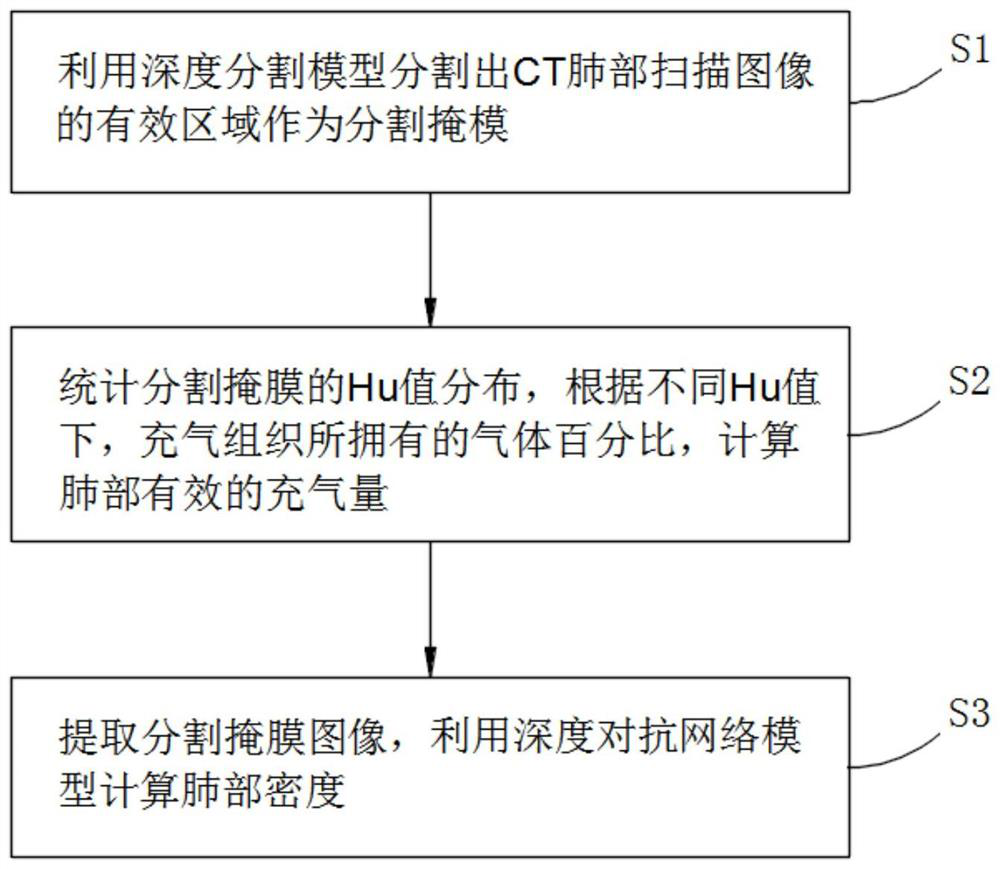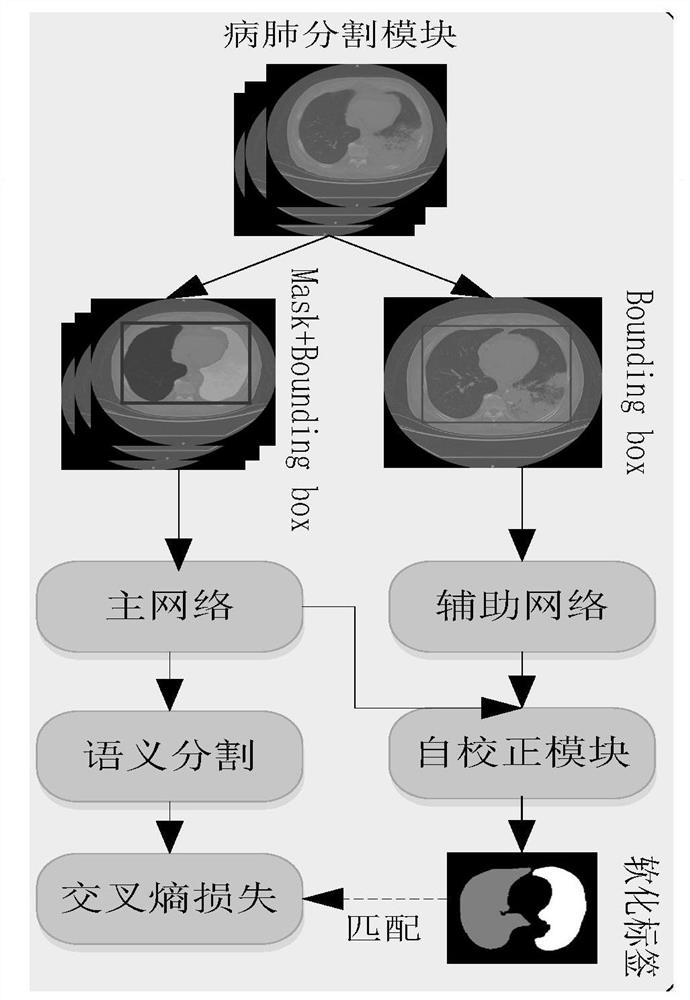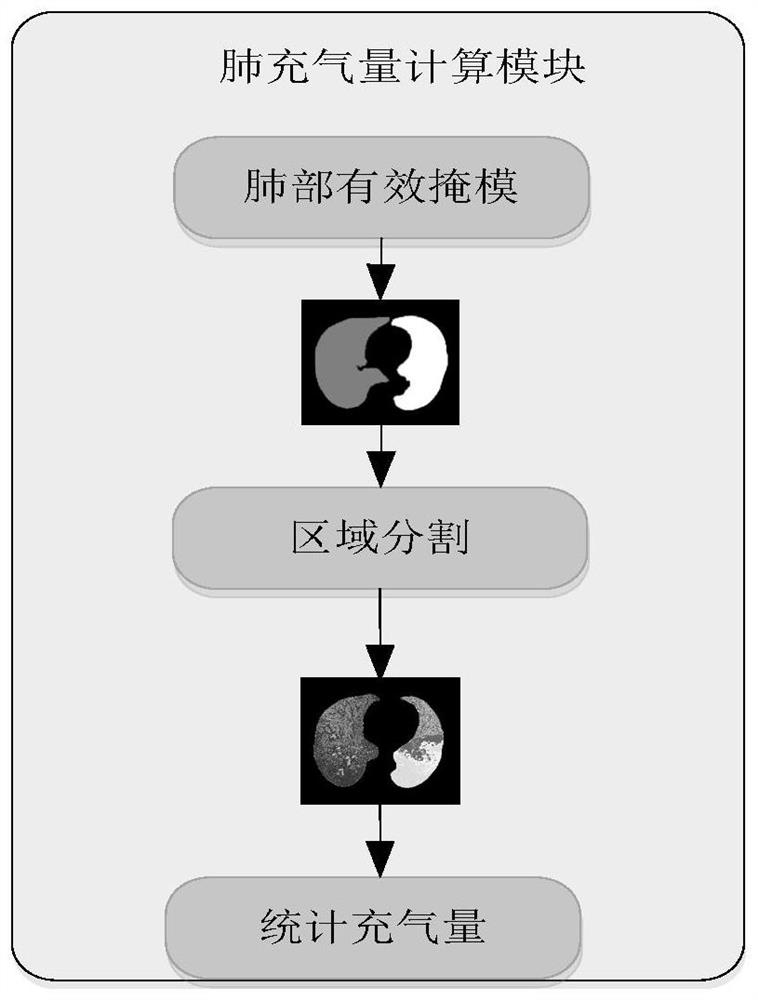Deep learning-based diseased lung CT segmentation and quantitative analysis method and system
A deep learning and quantitative analysis technology, applied in the field of pathological diagnosis, can solve the problems of difficult segmentation, adhesion of related soft tissues, and insignificant difference between the HU value of the lesion area and the lung contour, so as to reduce the difficulty of labeling and assist early screening. The effect of checking and diagnosing, reducing the amount of annotation
- Summary
- Abstract
- Description
- Claims
- Application Information
AI Technical Summary
Problems solved by technology
Method used
Image
Examples
Embodiment Construction
[0038] The technical solutions in the embodiments of the present invention will be clearly and completely described below with reference to the accompanying drawings in the embodiments of the present invention. Obviously, the described embodiments are only a part of the embodiments of the present invention, rather than all the embodiments. Based on the embodiments of the present invention, all other embodiments obtained by those of ordinary skill in the art without creative efforts shall fall within the protection scope of the present invention.
[0039] The present invention provides such as figure 1 Shown is a deep learning-based method for segmentation and quantitative analysis of diseased lung CT, the method includes the following steps:
[0040] S1. Use a depth segmentation model to segment the effective area of the CT lung scan image as a segmentation mask, and the depth segmentation model is trained by the main segmentation model, such as figure 2 As shown, the trai...
PUM
 Login to View More
Login to View More Abstract
Description
Claims
Application Information
 Login to View More
Login to View More - R&D
- Intellectual Property
- Life Sciences
- Materials
- Tech Scout
- Unparalleled Data Quality
- Higher Quality Content
- 60% Fewer Hallucinations
Browse by: Latest US Patents, China's latest patents, Technical Efficacy Thesaurus, Application Domain, Technology Topic, Popular Technical Reports.
© 2025 PatSnap. All rights reserved.Legal|Privacy policy|Modern Slavery Act Transparency Statement|Sitemap|About US| Contact US: help@patsnap.com



